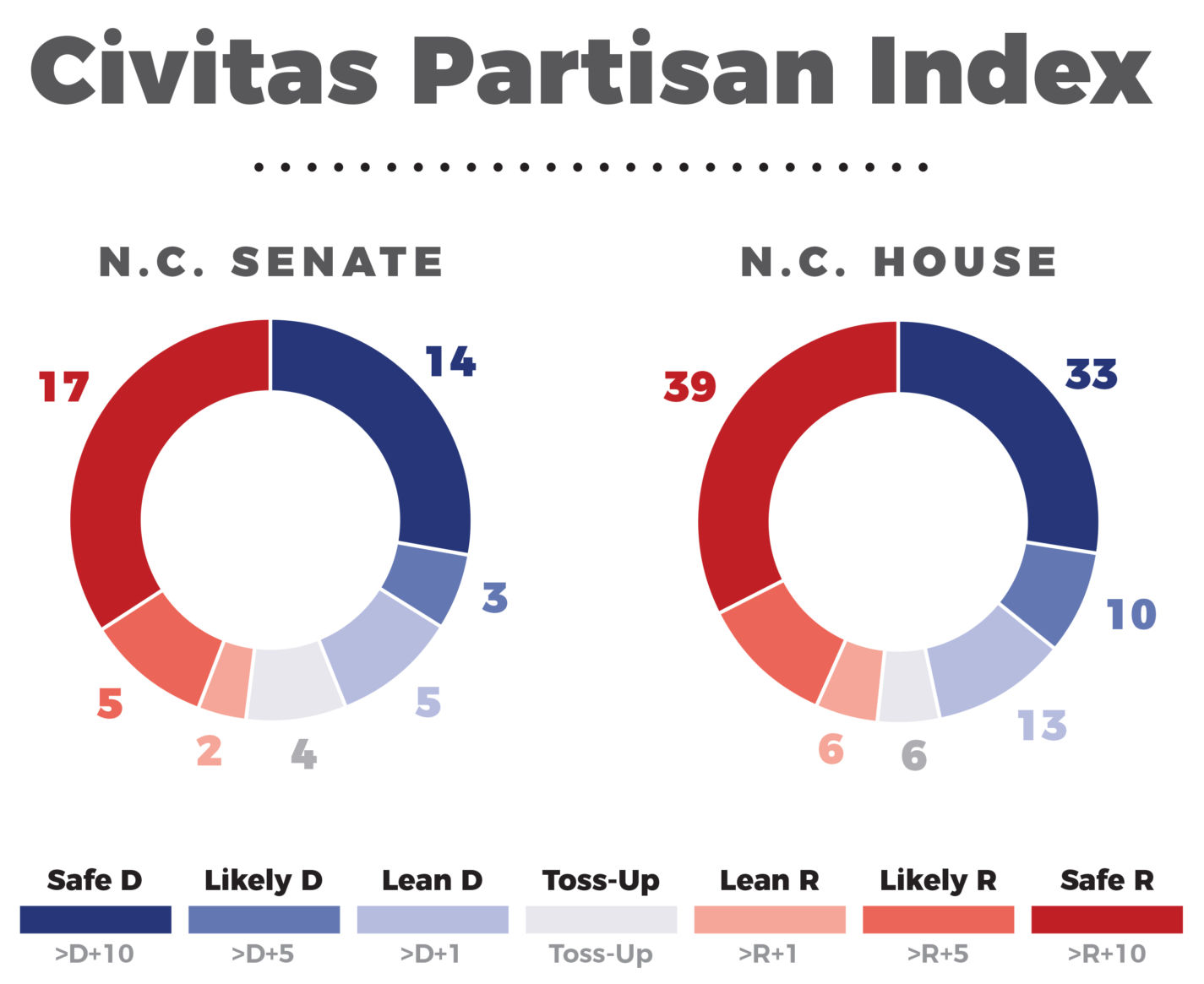March 2, 2022
Wednesday, March 2, 2022
RALEIGH – Today, the John Locke Foundation’s Civitas Center for Public Integrity released the updated 2022 Civitas Partisan Index(CPI) to reflect the final state legislative district maps. This tool reflects the political balance of power in North Carolina.
Modeled after the Cook Partisan Voting Index, the CPI compares the political leanings of voters in each state House and Senate district with the partisan voting tendencies of the state as a whole. The result is a letter (D or R) followed by a number, indicating the extent to which each district leans one way or the other.
CPI 2022 utilizes the voter data from the 2020 election results for governor and the nine other Council of State offices. Although presidential and U.S. Senate election results are also available, state-level races give a more accurate picture of how citizens will vote in a state legislative race than do national races.
The CPI indicates that there are 14 safe Democratic, 3 likely Democratic, 5 lean Democratic, 4 toss-up, 2 lean Republican, 5 likely Republican, and 17 safe Republican seats in the Senate. In the House, there are 33 safe Democratic, 10 likely Democratic, 13 lean Democratic, 6 toss-up, 6 lean Republican, 13 likely Republican, and 39 safe Republican seats.

Although the CPI does not predict elections, someone using the CPI without any other data would have successfully predicted 94% of state legislative races in 2020. CPI serves as a unique tool that reveals which direction districts lean, which can illuminate significant trends.
The North Carolina state House and Senate districts, as well as the U.S. congressional districts, were recently redrawn after an intense, prolonged legal tug-of-war between the Republican-led General Assembly and multiple plaintiffs. On Feb. 23, the North Carolina Supreme Court rejected appeals surrounding the state legislative and U.S. congressional maps. State legislative leaders are now asking the U.S. Supreme Court to issue an emergency stay for the congressional map.
Commenting on the court-approved state legislative maps, Dr. Andy Jackson, Director of the Civitas Center for Public Integrity, said, “If the courts’ goal was to help Democrats win more seats, they succeeded. They achieved that primarily by reducing the number of districts in urban areas where Republicans could effectively compete. For example, there were two Republican-leaning competitive districts in the Granville-Wake county cluster in the original Senate map. Now there are none.”
“What the court-ordered maps do not do is make more competitive districts. The total number of competitive seats in the General Assembly, in which neither party has more than a five percentage point advantage, remained unchanged at 36.”
Jackson continued, “The CPI has proven to be a reliable tool for finding the baseline party vote in state legislative districts.”
This glimpse into voter tendency, broken down into state House and Senate districts, provides analysts, journalists, candidates, and other interested parties with a more full-bodied context of each district’s leanings.
We invite you to check out your legislative districts on the Civitas Partisan Index.